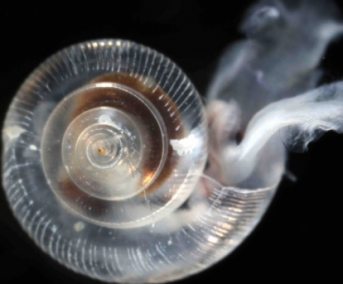Acidification vulnerability assessment completed for Salish Sea marine calcifiers

Researchers took advantage of recently reached scientific consensus on how pteropods, echinoderms and Dungeness crabs are being affected by OA as the researchers interpreted computer models that predict how OA is changing the Salish Sea’s water chemistry. The Salish Sea, which encompasses Puget Sound, straddles the Washington-Canada border.
The project dovetails with a broader computer modeling effort to understand how marine communities along the North American West Coast are being affected by OA, and the degree to which land-based pollution sources are exacerbating acidification and hypoxia conditions.
The Salish Sea study also has laid a scientific foundation to assess OA’s economic impacts on the local Dungeness crab industry, which is valued at more than $100 million.
The technical approaches used in the Salish Sea are being compared to those being used to assess OA’s biological impacts in the Southern California Bight and the San Francisco-Monterey coastal region.
More news related to: Climate Change, Ocean Acidification and Hypoxia